
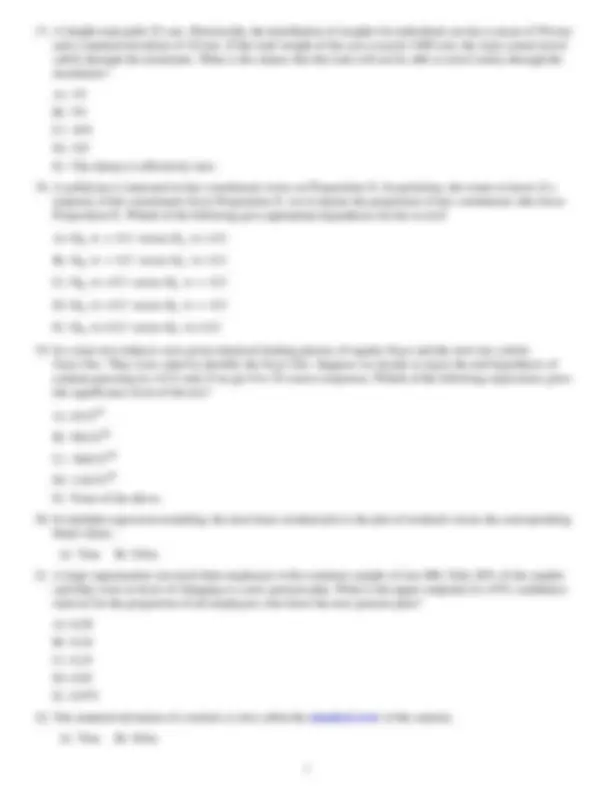
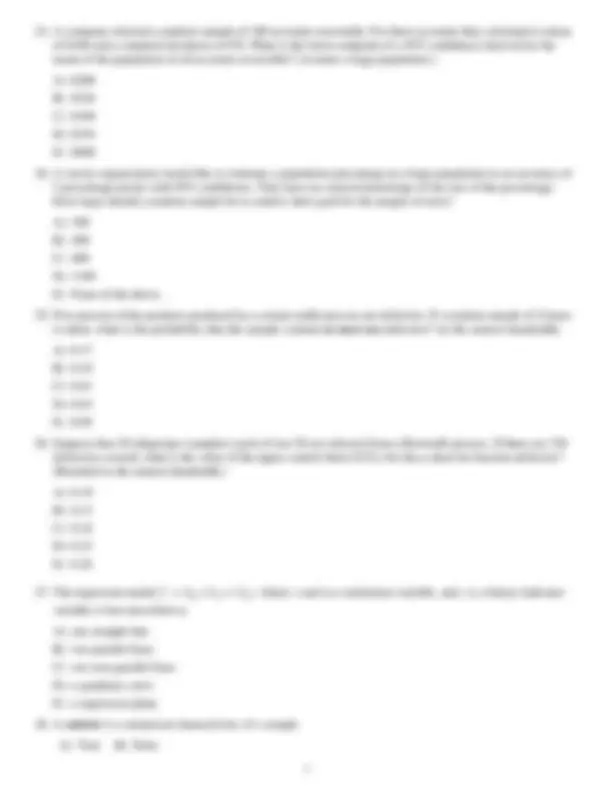
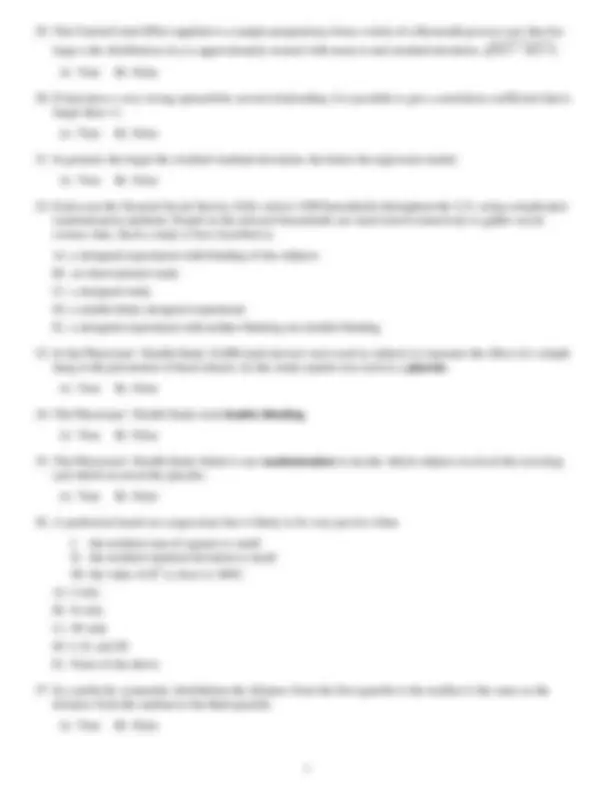
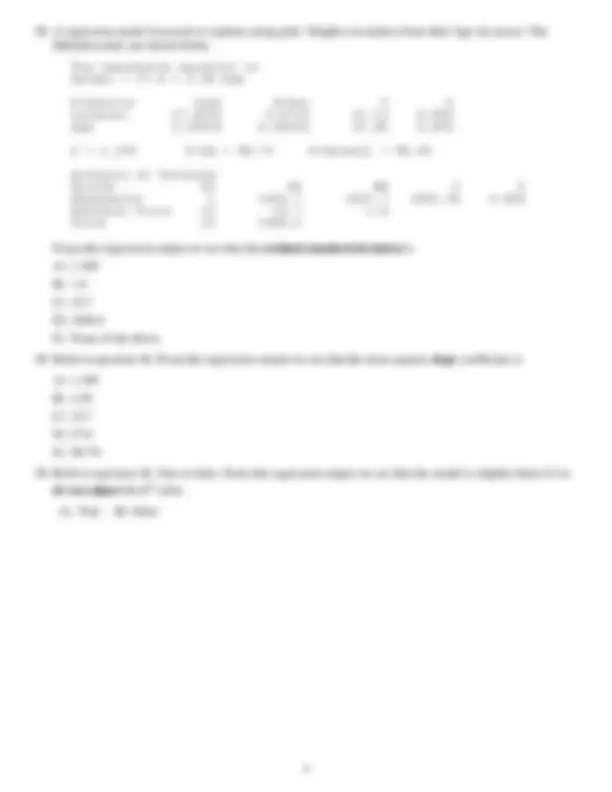
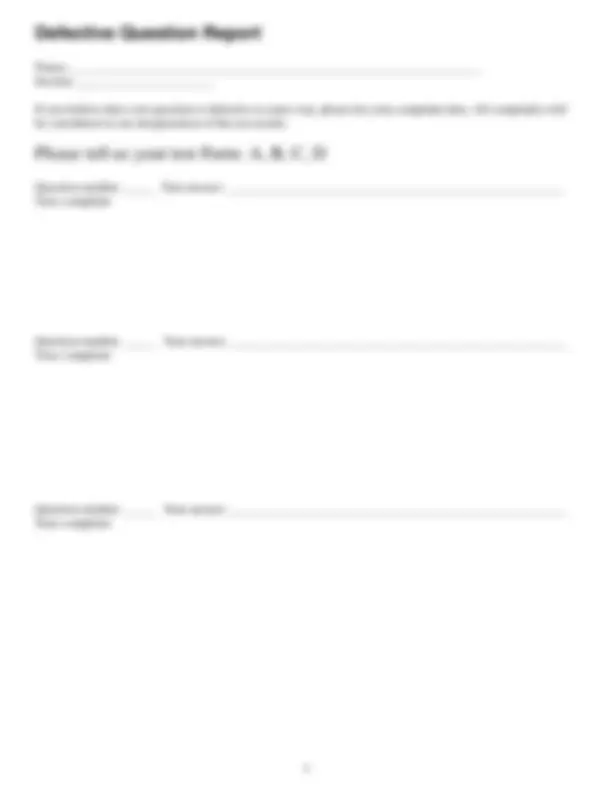


Study with the several resources on Docsity

Earn points by helping other students or get them with a premium plan


Prepare for your exams
Study with the several resources on Docsity

Earn points to download
Earn points by helping other students or get them with a premium plan
Community
Ask the community for help and clear up your study doubts
Discover the best universities in your country according to Docsity users
Free resources
Download our free guides on studying techniques, anxiety management strategies, and thesis advice from Docsity tutors
This is the Past Exam of Business Statistics which includes Residual, Diameter, Fitted Regression, Predicts, Volume, Diameter and Height, Largest Residual, Residual Standard Deviation, Model Fit etc. Key important points are: Null Hypothesis, Distribution, Construct, Degrees of Freedom, Value, Hypothesis, Consumer Reports, Statistically Significant, Rejected, Process
Typology: Exams
1 / 9

This page cannot be seen from the preview
Don't miss anything!






Please circle one. Discussion Section: 9:30, 10:30, 11:30, or 12:
Please enter all of your answers on these exam pages. There are 50 questions. The Defective Question Report, Formula sheet, and Tables will be handed out separtely.
A) True B) False
n ( ( y – 50 ) ⁄σ)
A) True B) False
A) True B) False
A) True B) False
A) True B) False
0 1 2 3 4 5 6 7 8 9 10
A) True B) False
y ˆ^ = b 0 + b 1 x + b 2 z
A) True B) False
A) True B) False
I. the residual sum of squares is small II. the residual standard deviation is small III. the value of R^2 is close to 100% A) I only B) II only C) III only D) I, II, and III E) None of the above
( π ( 1 – π)) ⁄ n
I. The median II. The interquartile range III. The standard deviation A) I and II only B) I and III only C) II and III only D) I, II, and III E) None of the above.
What is the chance that a Credit Card transaction is selected? A) 20% B) 35% C) 55% D) 80% E) None of the above.
Brand Purchased Reebok Nike Other Type of Purchase
Cash 5% 10% 5% Credit Card 40% 15% 25%
60 70 80
Height
Density
Heights of Males in 22S:
A) 1. B) 2. C) 23. D) 27. E) 98.7%